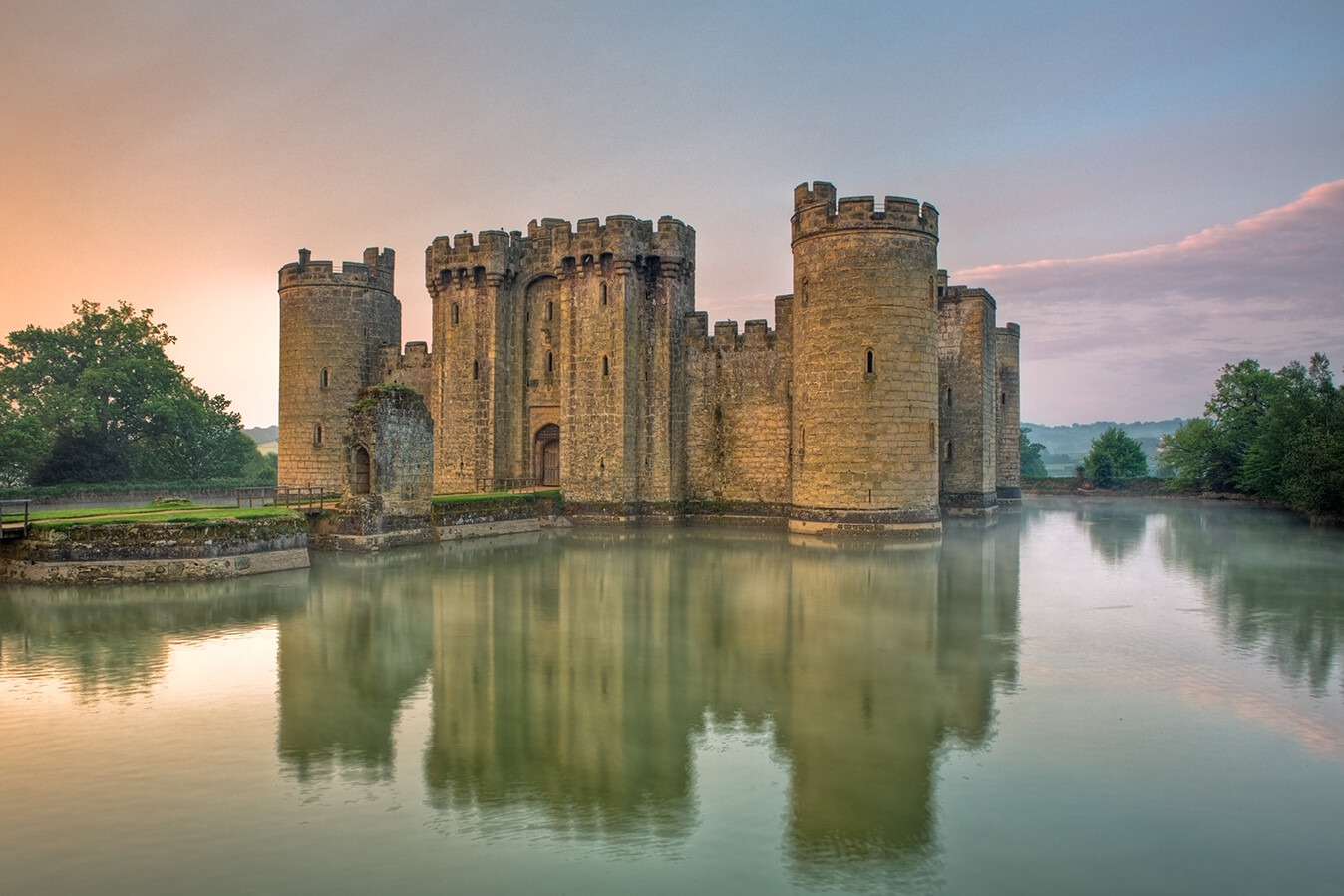
The moat, a defining feature of many historic castles, holds a wealth of fascinating history and practical significance. From its origins as a defensive structure to its role in shaping the architectural landscape, the castle moat has left an indelible mark on history. In this article, we will delve into 15 captivating facts about castle moats, shedding light on their multifaceted nature and enduring legacy. Join us as we explore the evolution of moats, their strategic importance in medieval warfare, and the enduring allure they hold in the realm of historical architecture. Whether you're a history enthusiast, an architecture buff, or simply curious about these iconic fortifications, prepare to be enthralled by the rich tapestry of insights awaiting you. Let's embark on a journey through time and unravel the secrets of castle moats, uncovering the stories they have to tell and the enduring impact they have made on the world around them.
Key Takeaways:
- Castle moats were more than just water-filled ditches. They were symbols of power and wealth, home to diverse ecosystems, and even filled with hazardous materials to deter enemies.
- While moats were once formidable defenses, they eventually became obsolete due to advancements in warfare. However, they still captivate our imagination and remain prominent features in historical sites worldwide.
Moats were not always filled with water
Originally, moats were dry ditches, serving as a barrier against attackers. It wasn't until the 12th century that water-filled moats became prevalent.
The purpose of a moat was not just defense
While moats provided a formidable obstacle to invaders, they also served as a status symbol, showcasing the wealth and authority of the castle's inhabitants.
Moats were often home to diverse ecosystems
The water in moats provided a habitat for various aquatic species, contributing to the biodiversity of the castle grounds.
Some moats were filled with hazardous materials
In addition to water, moats were occasionally filled with hazardous substances such as quicklime or waste to deter tunneling and undermine enemy morale.
Moats were not always encircled the entire castle
In some cases, moats only surrounded specific sections of the castle, offering targeted protection to the most vulnerable areas.
Moats required regular maintenance
Maintaining the water level and structural integrity of moats demanded significant resources and labor, reflecting the commitment of castle inhabitants to their defense.
The width and depth of moats varied greatly
Moats were engineered in diverse dimensions, with some spanning over 30 feet in width and reaching depths of up to 20 feet.
Moats were often crossed by drawbridges
To allow controlled access, drawbridges were constructed over moats, adding an extra layer of defense to the castle entrance.
Moats were not exclusive to castles
While often associated with castles, moats were also utilized in fortifications of various types, including manor houses and forts.
Some moats featured intricate water management systems
To maintain a consistent water supply, elaborate systems of channels and sluices were employed, showcasing the engineering prowess of the time.
Moats were not impervious to siege tactics
Despite their formidable nature, moats could be overcome through tactics such as filling them with materials to create a makeshift bridge or by using siege towers to bypass their defenses.
The decline of moats coincided with advancements in warfare
As siege tactics evolved and artillery became more prevalent, the effectiveness of moats as a primary defense diminished, leading to their gradual obsolescence.
Moats are still a prominent feature in many historical sites
Numerous castles and fortresses around the world still boast well-preserved moats, offering visitors a glimpse into the strategic and architectural ingenuity of the past.
The term "moat" is often used metaphorically
Beyond its historical context, the term "moat" is frequently employed in business and finance to symbolize a competitive advantage or protective barrier.
Moats continue to captivate the imagination
The enduring allure of moats is evident in their frequent portrayal in literature, art, and popular culture, cementing their status as an enduring emblem of medieval history.
The castle moat stands as a testament to the ingenuity and resourcefulness of ancient civilizations, embodying both practical defense and symbolic grandeur. As we explore the annals of history, the enduring legacy of these iconic features continues to fascinate and inspire.
Conclusion
In conclusion, castle moats have played a crucial role throughout history, serving as defensive barriers, status symbols, and even sources of water for inhabitants. These fascinating structures have left an indelible mark on the architectural and military history of various civilizations. From medieval Europe to ancient Asia, the significance of castle moats is evident in the enduring legacy they have left behind. As we continue to study and preserve these remnants of the past, we gain valuable insights into the strategic, social, and engineering aspects of bygone eras.
FAQs
What was the purpose of a castle moat?
Castle moats served as defensive barriers, deterring potential attackers and making it challenging for siege engines to approach the castle walls. Additionally, the water in the moat provided an additional line of defense and could be used as a source of drinking water for the castle's inhabitants during times of siege.
Were all castles surrounded by moats?
While moats were a common feature of many castles, not all castles were surrounded by moats. The presence of a moat depended on various factors such as the geographical location of the castle, the resources available for construction, and the specific defensive needs of the castle.
Was this page helpful?
Our commitment to delivering trustworthy and engaging content is at the heart of what we do. Each fact on our site is contributed by real users like you, bringing a wealth of diverse insights and information. To ensure the highest standards of accuracy and reliability, our dedicated editors meticulously review each submission. This process guarantees that the facts we share are not only fascinating but also credible. Trust in our commitment to quality and authenticity as you explore and learn with us.


